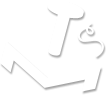I don't agree that this opens up the game to any more abuse than what could already occur. If you wanted to sniff the network traffic, you could easily figure out Johnny's server API and create your own routines, browser-based or using your language of choice, to do things that the current, web-based client can't do. Unless he's somehow protecting against that on the server side, I would venture to say that it would be easier to hack GT as a web-based game (where you can freely see all of the client-side code) than it would be if he had written a proprietary client.
That being said, the idea of supporting multiple OSes and OS versions would not be something that I would want to take on as an individual and I completely see the merit of this being a browser-based game. I, too, would be against the desktop client idea. On the other hand, if George is volunteering to reverse-engineer Johnny's game based on the network traffic he sees and putting this into some kind of client app, go for it. If you don't mind targeting Android first, that would be great, because I can't really play the game on my phone and I would love to be able to do that.
I will say this, however, in response to some of the benefits listed in the original post:
- Downloading the entire map and all pieces once at the beginning of the day would be insufficient for showing moves made by your alliance members during the day.
- Downloading the entire map once at the beginning of the day could possibly produce a greater server load and bandwidth than the way that it is currently done since most people do not look at every single sector of the map during the day.
- Caching moves on the client and sending them every ten minutes or at shutdown wouldn't be good enough if the client crashed or you lost power after 9 minutes and 59 seconds; you could mitigate this by saving the moves to a file, locally, but if the user didn't restart the app right away, those moves would be "lost" or could get applied the next day after the cycle.
All of the improvements that you suggested could actually be implemented in a browser-based game and would only have to be written once in a standards-compliant manner to work across all browsers (well, maybe not IE if you're talking standards, but all decent browsers). Even the ability to view the map at both zoom levels simultaneously. You could even add additional zoom levels or tiling like Google Maps so that you would never have to click on the edge of the screen to scroll. These are all choices that Johnny made when creating the game and I'm sure he had his reasons for them, though I'm fairly certain it would never have crossed his mind to make a client that users would have to download and install on their PC's.
I'm not sure how open Johnny is to having help since I've never really talked to the guy, but I'm sure if you wrote a new browser-based client that had superior functionality to the original and submitted it to him that he would at least consider putting it out there for general use. The real meat of the game, itself, is on the server. The client side is just bells and whistles. True functionality is limited only by how he designed the server-side API and the entire game could probably be played with nothing but http requests and completely text based if you could read and interpret the server's responses.




